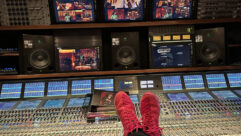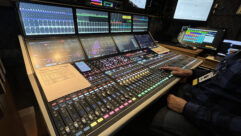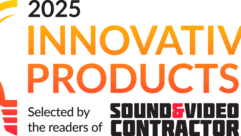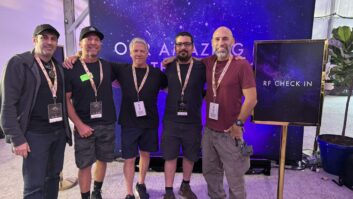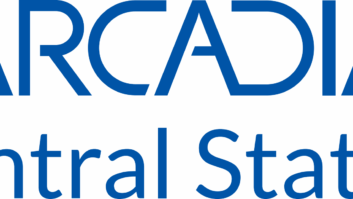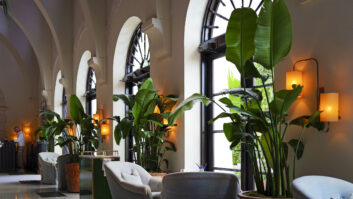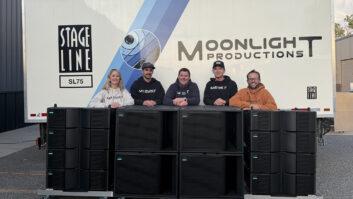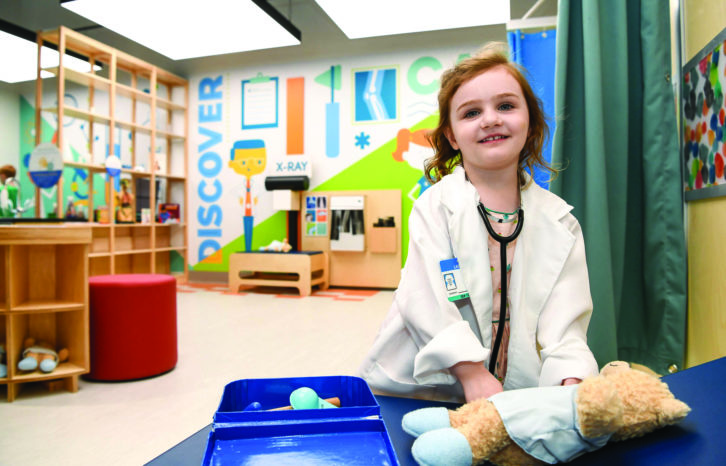
For children, an immersive technology is one they can operate themselves. At the new Ralph C. Wilson Children’s Museum, Explore & More in Buffalo, New York they’re free to touch and operate nearly everything. Local integrator Southtown Audio Video handled the project design and engineering. Heather Sidorowicz tells us how they made it all happen.
SVC: First give us a little history and background on Southtown Audio Video.
Heather Sidorowiz: Sure. Southtown Audio Video has been around since 1984, so we’re actually celebrating our 35-year anniversary this year. In 1984 it was started by my father and it was a hi-fi shop. Then at one point, he rented both Beta and VHS tapes. This is long before Blockbuster. It was also a satellite company. He did six-foot satellite dishes for bars and homes down to the small dishes. I started with him in the early 2000s. I always joke that my AV career is 18 years old now so it’s old enough to vote for itself. When I started it became more of a home theater shop as well. And then, in about 2013, we could see the renaissance of Buffalo starting to happen. Buffalo is an old steel town. We were, I believe, the second-richest city in 1901, but kind of downhill from there. Now we’re on our way back up. So Buffalo is fantastic and it’s really growing through our medical corridor and many, many other things. We can see the need for commercial AV where you have a relationship where you take care of your clients, so we started pointing our ship in that direction. I bought the company in 2014, and today we are about 85 percent commercial and the rest of that is what I would call relationship residential. We play in the corporate AV world – of course education, healthcare. My current favorite is immersive technologies like the one I’m going to speak about today.
You’ve certainly got some immersive technology going at that unique museum. What’s the idea behind Explore & More?
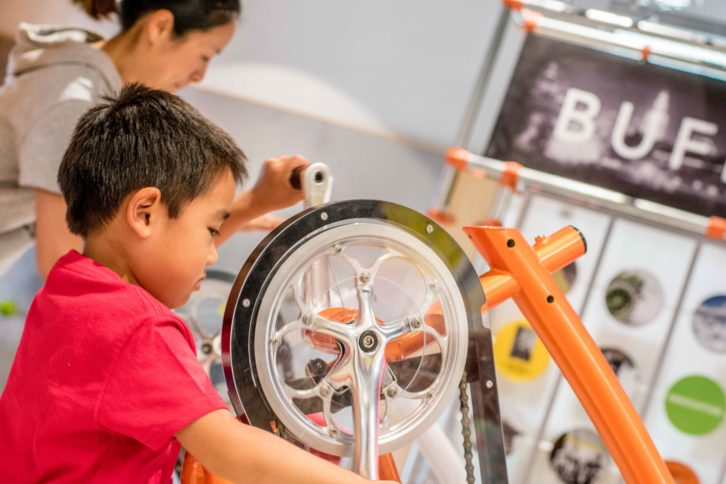 Explore & More was originally this little place in East Aurora, New York for many, many years. As Buffalo continued to grow they had an opportunity to open this state-of-the-art children’s museum–somewhere you could interact, somewhere that was autism-friendly, somewhere you could go back to over and over again. We worked with the exhibit company to help bring these concepts to life. This was actually a three-year-long project so three summers ago this was in front of me from the exhibit company where it was just concepts.
Explore & More was originally this little place in East Aurora, New York for many, many years. As Buffalo continued to grow they had an opportunity to open this state-of-the-art children’s museum–somewhere you could interact, somewhere that was autism-friendly, somewhere you could go back to over and over again. We worked with the exhibit company to help bring these concepts to life. This was actually a three-year-long project so three summers ago this was in front of me from the exhibit company where it was just concepts.
You’re dealing with some short attention spans for the most part so you’ve got to get kids involved right away.
That is correct. And there are multiple different exhibits that do that. For example, there’s a great space on the second floor that pays tribute to Buffalo because we had the Erie Canal. So the space has a water table area you can actually create with the canal. You can separate the water and sail a boat through different locks. There is an exhibit that is built like a canal but with interactive doors where you open up a cupboard and it tells you a piece of history. There is a rudder in the back of the “boat”–if you push it one way it says Starboard and the other way it says Port. So these small interactions are interlaced really well with the AV and everything else that is in the space.
I believe you have a BrightSign server as well.
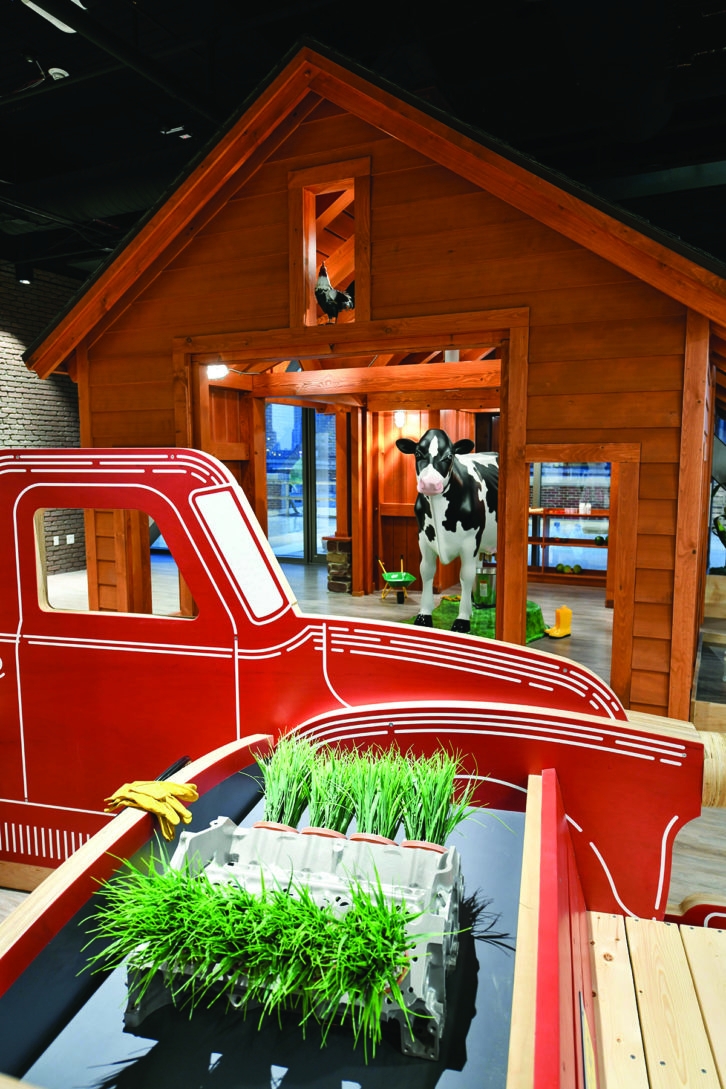 We do. The motion sensor was provided by the exhibit company, so let’s talk about that rudder for a second. When guests push or pull the rudder, it initiates through the motion sensor, which launches a command in the BrightSign player to play the sound effect through a speaker. That same effect happens in many different areas. Also, underneath the boat there are these little cupboards and cabinets so the kids can dress up. But they don’t just dress up; when they open the cupboard or cabinet, the motion sensor says it’s open. The BrightSign player launches the audio command, and then through a small hidden speaker you hear a bit of a story.
We do. The motion sensor was provided by the exhibit company, so let’s talk about that rudder for a second. When guests push or pull the rudder, it initiates through the motion sensor, which launches a command in the BrightSign player to play the sound effect through a speaker. That same effect happens in many different areas. Also, underneath the boat there are these little cupboards and cabinets so the kids can dress up. But they don’t just dress up; when they open the cupboard or cabinet, the motion sensor says it’s open. The BrightSign player launches the audio command, and then through a small hidden speaker you hear a bit of a story.
How do you keep the exhibits new and fresh when the kids have a return trip?
Well first of all, as I mentioned, it’s multiple floors so you’ll want to go back because you’ll want to play again. Also, the exhibit company has created ways of having new exhibits. They have one exhibit that will continuously change throughout the years so that there’s always a reason to go back. They also have another area where there’s a place for cooking classes so guests can have a kind of farm-to-table experience. That’s through a local grocery store. On the top floor there’s a farm exhibit where the kids can pick a carrot – not a real carrot, but a plastic carrot. There are kids out there who don’t know the experience of where a carrot comes from or that tomatoes grow on a vine. There’s a rooster up there that crows every now and then—that’s a hidden speaker and again a BrightSign player. And on the other side, there’s a whole hospital exhibit that will allow kids to get an MRI of their teddy bear. They actually wanted it to be loud and a little bit intrusive because MRIs are super scary for kids. So once kids have had that experience there at the museum, if they’re ever in a situation where they have to have an MRI they’ll know, and not be as afraid. That exhibit is really this great piece for helping kids long term.
I saw one of the exhibits that simulates ice skating wearing their socks. And you have some 65-inch BrightSign monitors above that space and you can show the kids themselves on the display.
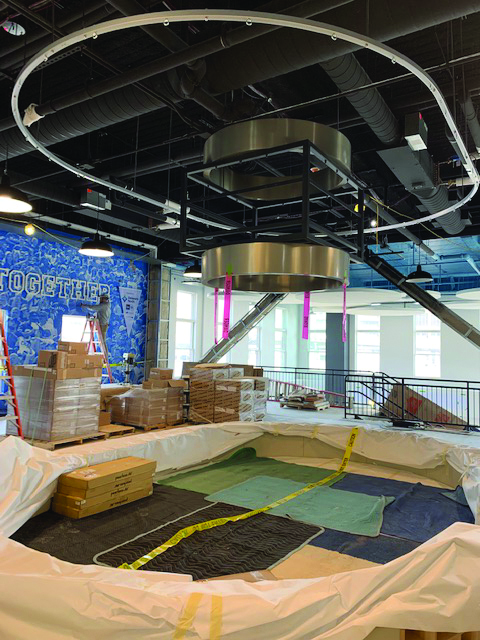 They do, yeah. They wanted to create a small version of our Sabres arena. Buffalo is a big sports town. So we created a mini ice rink so the kids can be on their socks and skate around and above them is a “Jumbotron”. We created that with Sony 65-inch commercial displays. We chose them because of their high brightness, high contrast ratio so there are no issues, and of course RS232 for control. Those go back to BrightSign players. A local company did the content. The content is interlaced with cameras throughout the floor. So, just like the with the kiss cam at the hockey game, if they’re dancing around they might be up on the Jumbotron themselves.
They do, yeah. They wanted to create a small version of our Sabres arena. Buffalo is a big sports town. So we created a mini ice rink so the kids can be on their socks and skate around and above them is a “Jumbotron”. We created that with Sony 65-inch commercial displays. We chose them because of their high brightness, high contrast ratio so there are no issues, and of course RS232 for control. Those go back to BrightSign players. A local company did the content. The content is interlaced with cameras throughout the floor. So, just like the with the kiss cam at the hockey game, if they’re dancing around they might be up on the Jumbotron themselves.
Probably their favorite thing to see on the monitors is themselves anyway.
Of course. Of course.
What type of cameras did you put in there?
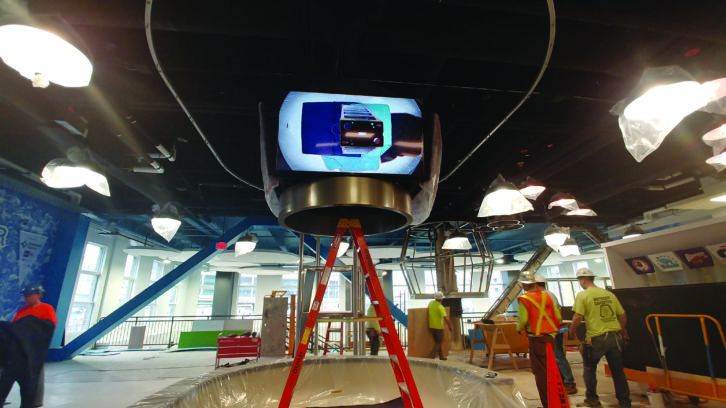
We used cameras by Marshall because we liked the very small format; we didn’t want something that was going to be an eyesore to take away from anything else. So these are very small cameras. They’re 2.5 megapixel, HD, 3G/HD-SDI Marshall cameras. Then, of course, we had to get specific lenses to make that work.
What did you use to keep track of all the elements on this project?
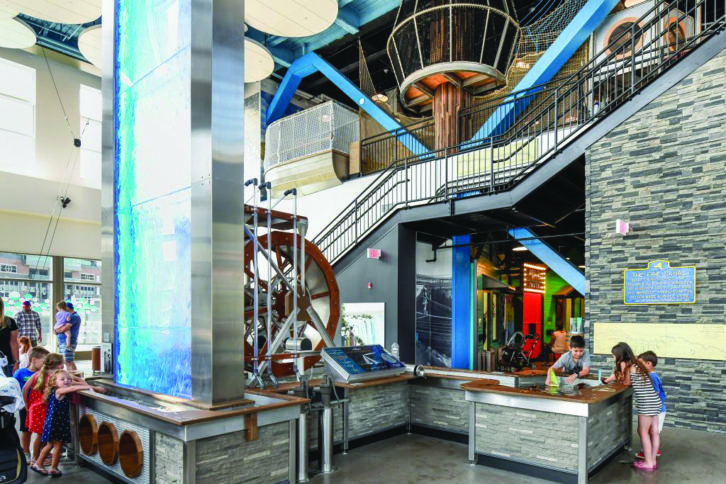 Huge with D-Tools, which we used from the very start of the project. The nice part about that is we could go per exhibit and talk about the scope. So job number one three years ago was putting in what the client requested and just being able to divide that down between me, who’s more sales-y, and the system engineer, so we could go back and forth in communication. Then as the scope would change we could continue to make those changes over time. Then the company itself actually had a CEO change, so that actually changed a lot of the exhibits right in the middle. And so again, with creative revision, we relied on D-Tools. In D-Tools we can get rid of things knowing it was still there if we needed to go back to it. Then we could build upon whatever the new scope was, or the new exhibit, or how it changed. We really couldn’t have done it without D-Tools. I really just don’t see another way that we could have done such a large, intricate project.
Huge with D-Tools, which we used from the very start of the project. The nice part about that is we could go per exhibit and talk about the scope. So job number one three years ago was putting in what the client requested and just being able to divide that down between me, who’s more sales-y, and the system engineer, so we could go back and forth in communication. Then as the scope would change we could continue to make those changes over time. Then the company itself actually had a CEO change, so that actually changed a lot of the exhibits right in the middle. And so again, with creative revision, we relied on D-Tools. In D-Tools we can get rid of things knowing it was still there if we needed to go back to it. Then we could build upon whatever the new scope was, or the new exhibit, or how it changed. We really couldn’t have done it without D-Tools. I really just don’t see another way that we could have done such a large, intricate project.
And keeping track of all the technical areas plus the labor all in the same project.
Yes.
When you first got in there what was the first step in the installation process once you were onsite? Was there construction still happening?
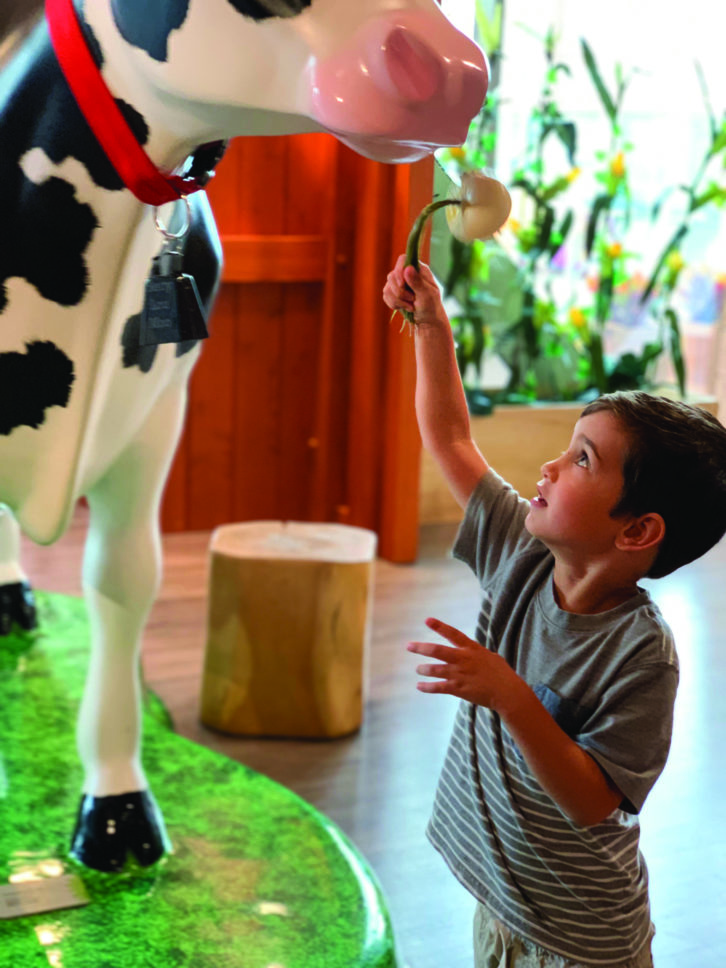 Yeah. This was definitely a hard hat, high-vis type area. For months I kept that gear in my car. We were in hard hats and safety vests for months and we were working with other subcontractors. My team’s great like that because they work with the other people. They talk to them. I think that’s a huge piece of the story. We just don’t go in and say “get out of our way”. There’s something to be said about humanism. The first step was to make sure that wires were run as promised. And then testing, of course. And then going through exhibit by exhibit creating a punch list and just working through it. It was definitely an eye-opening experience for us from a project management standpoint. We found, certainly, some holes that we have to tighten as we continue along this train of our business.
Yeah. This was definitely a hard hat, high-vis type area. For months I kept that gear in my car. We were in hard hats and safety vests for months and we were working with other subcontractors. My team’s great like that because they work with the other people. They talk to them. I think that’s a huge piece of the story. We just don’t go in and say “get out of our way”. There’s something to be said about humanism. The first step was to make sure that wires were run as promised. And then testing, of course. And then going through exhibit by exhibit creating a punch list and just working through it. It was definitely an eye-opening experience for us from a project management standpoint. We found, certainly, some holes that we have to tighten as we continue along this train of our business.
That building is a big place. You mentioned that it has four floors and lots of exhibits. How are the AV systems, the lights, displays and everything, controlled?
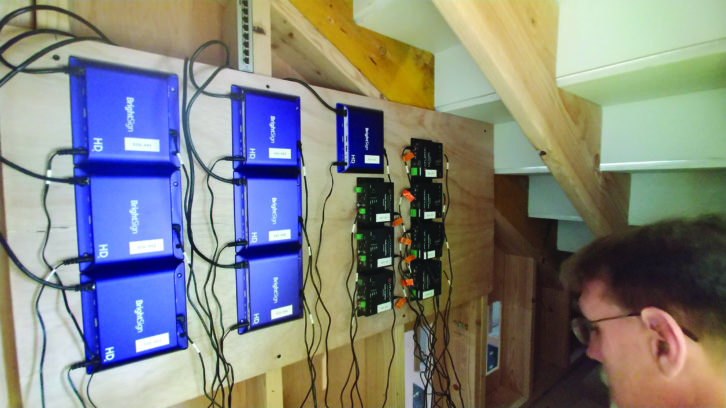 They are all on an overall simple control system by Crestron. The system will turn the exhibits on and off daily at a scheduled time, but does also allow the exhibit to override that schedule so that they can reboot if they needed or keep an exhibit on longer than the scheduled day if they’re going to have any after-hours events.
They are all on an overall simple control system by Crestron. The system will turn the exhibits on and off daily at a scheduled time, but does also allow the exhibit to override that schedule so that they can reboot if they needed or keep an exhibit on longer than the scheduled day if they’re going to have any after-hours events.
Some of that Crestron programming is more advanced but it’s also much more flexible than you can do with some other systems.
We needed an open template and a very good Crestron programmer, which we luckily have to be able to do such things. And it just works forever.
Did you run into anything unexpected or have to change plans during the project?
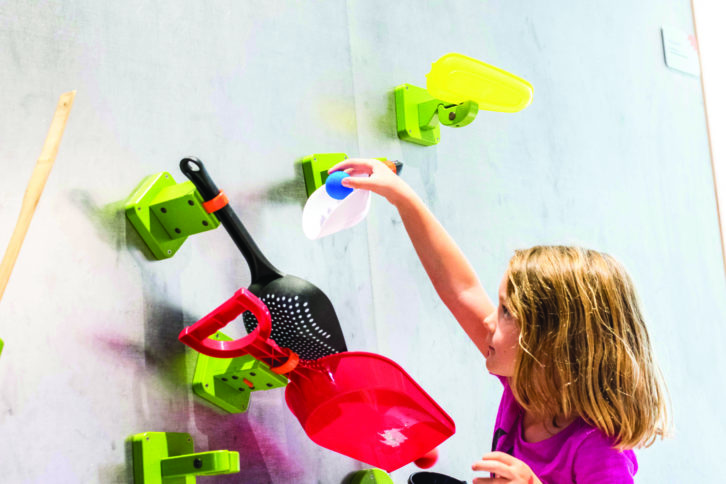 Absolutely. In a project like this I don’t think you could ever expect we’d get beginning to end without revisions. For example, the Marshall cameras that we talked about earlier. The original lens we ordered was not the lens that we ended up having to use because the client changed the location. In D-Tools you can easily create a revision to do that. And through great relationships with manufacturers, we were able to send stuff back. So yeah, there were definitely revisions and it’s important being able to track that. Otherwise, that could be a fatal flaw, especially in a project so large and complicated. If you can’t track those revisions and pricing you’re going to lose money instead of make money and nobody wants to do that.
Absolutely. In a project like this I don’t think you could ever expect we’d get beginning to end without revisions. For example, the Marshall cameras that we talked about earlier. The original lens we ordered was not the lens that we ended up having to use because the client changed the location. In D-Tools you can easily create a revision to do that. And through great relationships with manufacturers, we were able to send stuff back. So yeah, there were definitely revisions and it’s important being able to track that. Otherwise, that could be a fatal flaw, especially in a project so large and complicated. If you can’t track those revisions and pricing you’re going to lose money instead of make money and nobody wants to do that.
What was the experience like when it was finished?
We maintained the system for the first year so we got to see that. We also promised the client that we would be there for their first large event. So before the museum actually opened to the public they had a donor party. This was an after-hours for people who had committed funding to get the exhibit off the ground. To be there that evening and to almost be “working the event” in conjunction with the client, and to hear the giggles, the laughter from the grownups, that was amazing. I mean, that was probably my favorite moment on the project because for me, I had seen this for three years at that point. To see it not just installed, but to see that grownups were having such an immersive, fun experience, I don’t think that that can be beaten. Of course as the kids came in, later on, they also absolutely loved it. The client had a contractor day so they invited anyone that had worked on the building and their children. That was a great experience, for me and my kids, but also my staff and their children. It was a team-building experience for sure but also for them to be so proud of something that they’d worked on, and for their families to see what they’d been up to.
You would think that the kids would want to get more involved with it after they see their parents being amused and they don’t want to be left out of the action.
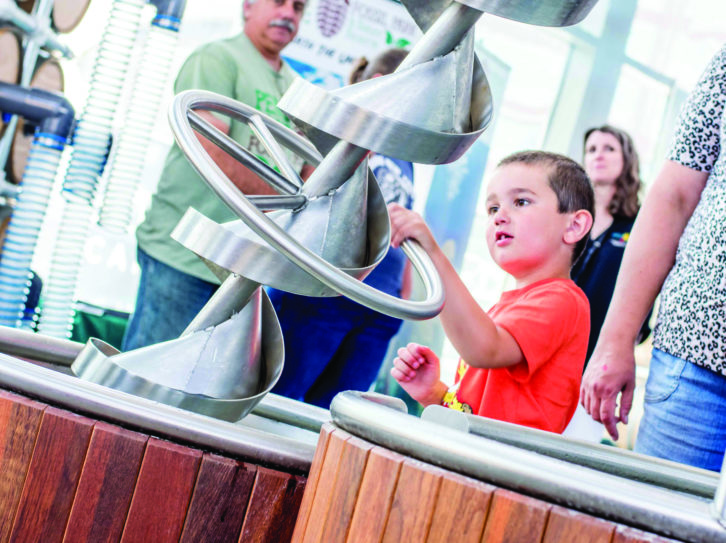 Yeah. And the day that we went, the youngest was a baby, like less than two, and the oldest was 13. I think there were six children the day that we went, just in our group, and there wasn’t one single child that wasn’t amused by one exhibit or the other. They all laughed enjoying themselves and wanting to go back. And I think that that speaks volumes for the way that the whole system was put together.
Yeah. And the day that we went, the youngest was a baby, like less than two, and the oldest was 13. I think there were six children the day that we went, just in our group, and there wasn’t one single child that wasn’t amused by one exhibit or the other. They all laughed enjoying themselves and wanting to go back. And I think that that speaks volumes for the way that the whole system was put together.
Now that this one is on the books and you’ve got this experience behind you, what do you have coming up next at Southtown Audio Video?
Well, we continue to work on our different jobs, which involve corporate, education and healthcare. I have a quote in front of me right now that I have to send pricing over by next week for another museum. And we’ll just keep on keeping on, so we’ll continue to look for interesting projects, so we’re thrilled to continue in these markets.



